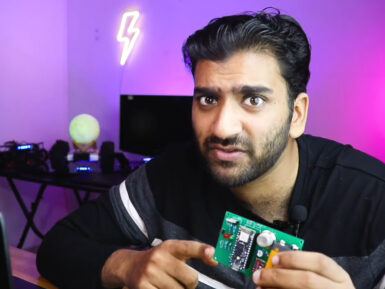
Overview
The USB-C Hub with 4 USB-A ports 3.2 Gen1 (USB 3.0) Hub connects all your computer peripherals, USB sticks and external hard drives with a USB-A port to your laptop with USB-C.
The USB-C Hub 3.2 with 4 USB-A ports is a plug and play device and is powered by your laptop's USB port. No additional power supply is needed.
- Use your USB-A peripherals on your USB-C device
- Plug and play on every USB-C port, no additional power supply needed
- Compact design and light-weighted: easy to take along
- Supports USB SuperSpeed (5Gbps) and is backwards compatible with USB 2.0 specifications
Tech specs
| Product category | USB-C hubs | cardreaders |
| USB Type-C | Yes |
| Connection cable | 30 cm |
| Number of USB ports | 4 |
| Colour | Black |
| Connections | USB |
| Connections on hub | USB A female (x4) |
| Computer connection | USB C male (x1) |
| USB version | USB 3.2 Gen 1 - SuperSpeed (USB 3.0) |
| Data transfer rate | 5 Gbps |
| Power supply | Bus powered |
Get Inspired

Home monitoring is a big part of home automation, but it's often overshadowed. Our attention tends to get hijacked by cool projects that perform physical actions. Whether it's turning the lights on, changing their color, running a robot vacuum cleaner, pulling on the blinds or watering the garden. All these actions are very cool and very visible. Which makes it easy to ignore the background tasks that are the backbone of great home automation. YouTuber and robotics maker RootSaid has been giving this a lot of thought. He's put together an excellent tutorial on creating a self contained, real-time home monitoring module. It's built around the excellent Nano RP2040 Connect, and sends everything to Arduino Cloud. Home Monitoring for You, and Your Family His objective was to create a compact bundle of sensors to keep an eye on various conditions around the home. This battery powered system can then be positioned anywhere, and monitored from Arduino Cloud. His idea is to install the module in an elderly relative's home. That way, he can keep an eye on their environment from anywhere. Of course, this doesn't have to be used purely as a care system. That's a great application for his environment monitoring platform, but it's just as useful for your own home automation system. Too often, sensors (temperature, for example) are physically connected to other automation devices, like Wi-Fi mains switches. But chances are you want to know the temperature over by your sofa. Not down the back of the TV cabinet. RootSaid to the rescue. A Compact Home Automation Sensor Module Let's take a look at the sensors bundled into this compact package. He's got an LDR in there to monitor the light levels. This is perfect for bigger home automation projects, as it can trigger lights all around the house. Even outdoor lighting, if you wanted. There's a Bosch BME280 to keep an eye on the environment. This is becoming a popular device among the home automation crowd.










